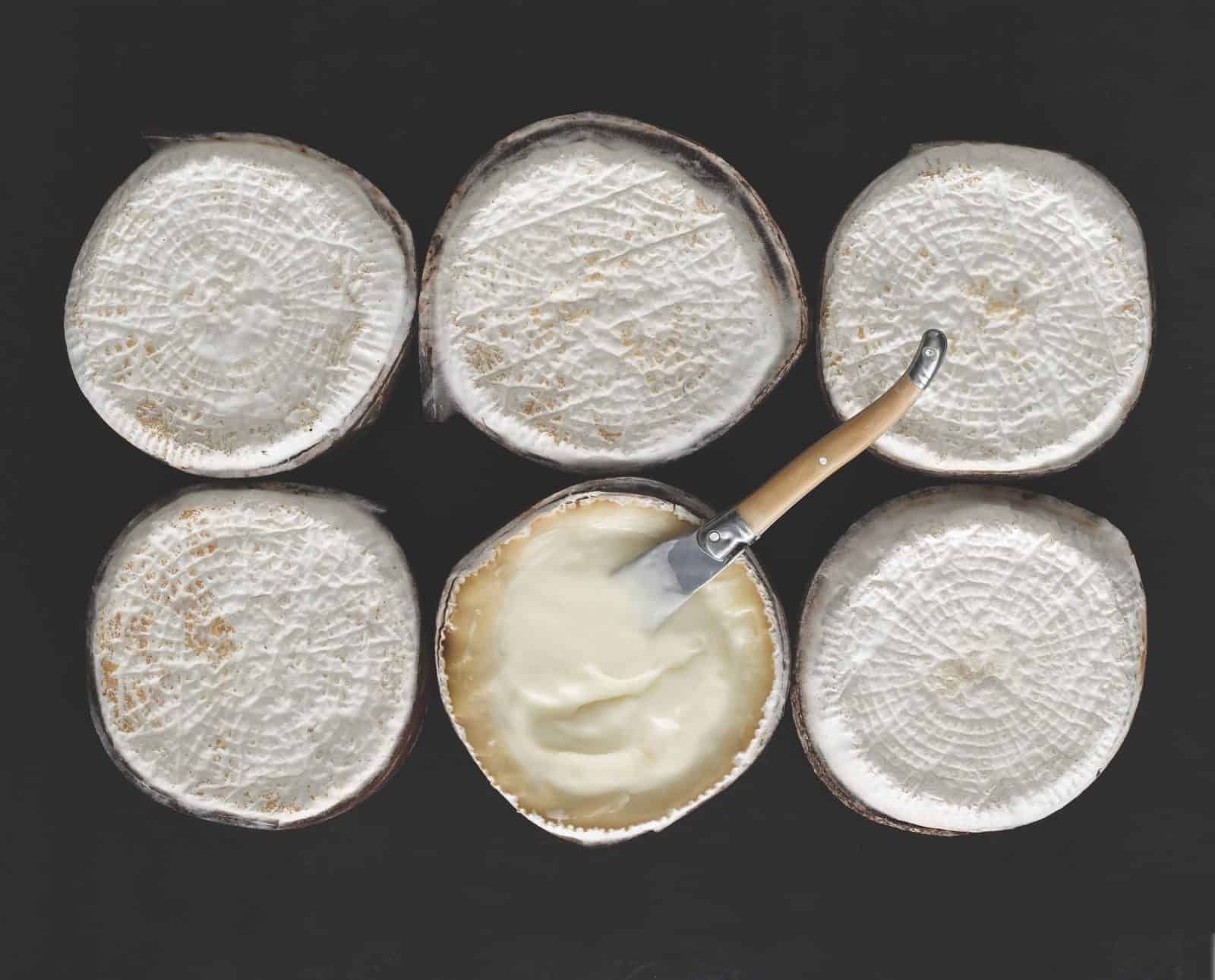
Photo: Merry Goat Round by Mark Ferri
![]() What’s the deal with lactose in cheese?
What’s the deal with lactose in cheese?
![]() Lactose is a type of sugar naturally present in milk. It accounts for around 5 percent of what makes milk milk in the case of the most popular cheesemaking milks: cow’s, goat’s, and sheep’s. This means lactose is the second-most prominent component of milk behind water.
Lactose is a type of sugar naturally present in milk. It accounts for around 5 percent of what makes milk milk in the case of the most popular cheesemaking milks: cow’s, goat’s, and sheep’s. This means lactose is the second-most prominent component of milk behind water.
When we consume lactose two possible digestive journeys can occur: One entails the lactose molecule being clipped in half into its substituent pieces (glucose and galactose, a.k.a. sugars) by an enzyme called lactase, a process which happen sin the small intestine. From there, our bodies absorb these simpler sugars and use them for energy.
The second possible journey is a bit more tumultuous. If you’re lactose intolerant it means you don’t produce the necessary levels of the lactase enzyme—or worst-case scenario, you don’t produce any lactase at all. With insufficient enzymes to break it down, the lactose continues intact and travels into the large intestine. There, your gut microbes begin to ferment this sugar. And just like in other fermentation processes, your microbes produce various compounds—acid, gas, etc. As you might imagine, those resulting compounds can cause some digestive distress.
What does all this mean for lactose intolerant folks who want to consume cheese? They’re in luck! The vast majority of cheeses contain virtually no residual lactose. Many cheeses are made by adding starter culture bacteria to milk. These bacteria are known as lactic acid bacteria; they ferment lactose into lactic acid. This process is not only crucial for cheese flavor and texture, but it also means that the lactose disappears during fermentation before anyone has a chance to consume the cheese.
With this being said, some cheeses are prone to having higher lactose content than others. Some cheeses, such as fresh uncultured cheeses like queso fresco and ricotta, don’t have starter culture added to them, so there’s residual lactose. When in doubt, it’s always best to check the label! If you see an amount listed under the “Sugars” heading, it’s probably lactose. Also, be wary of cheeses made with additional milk or cream, both lactose-heavy ingredients. Lucky for us, many cheese producers are catching on and will now declare “Lactose-Free” somewhere on the label to help guide consumers.




